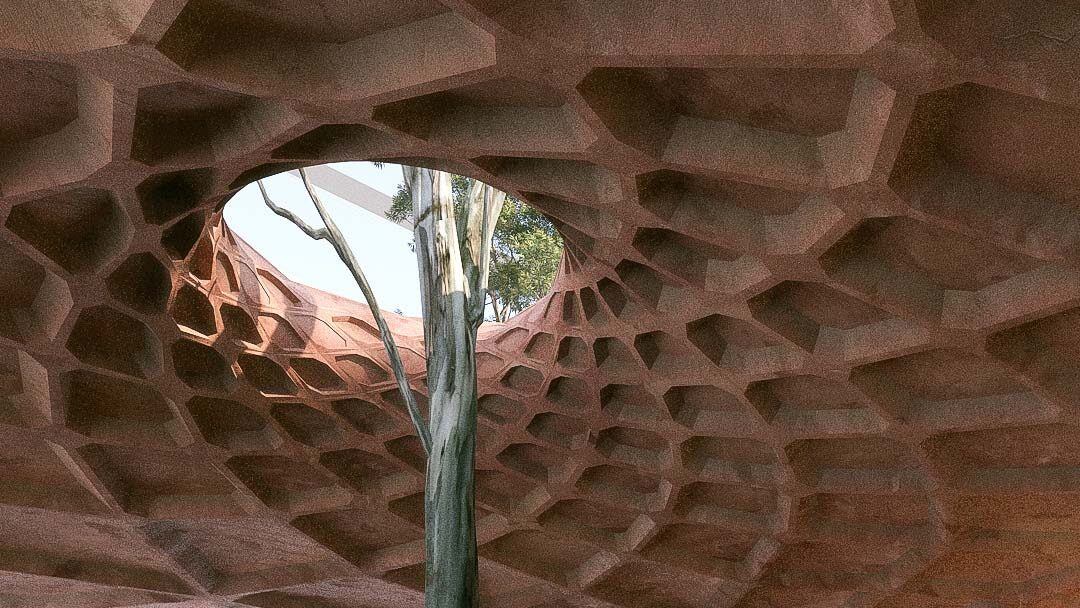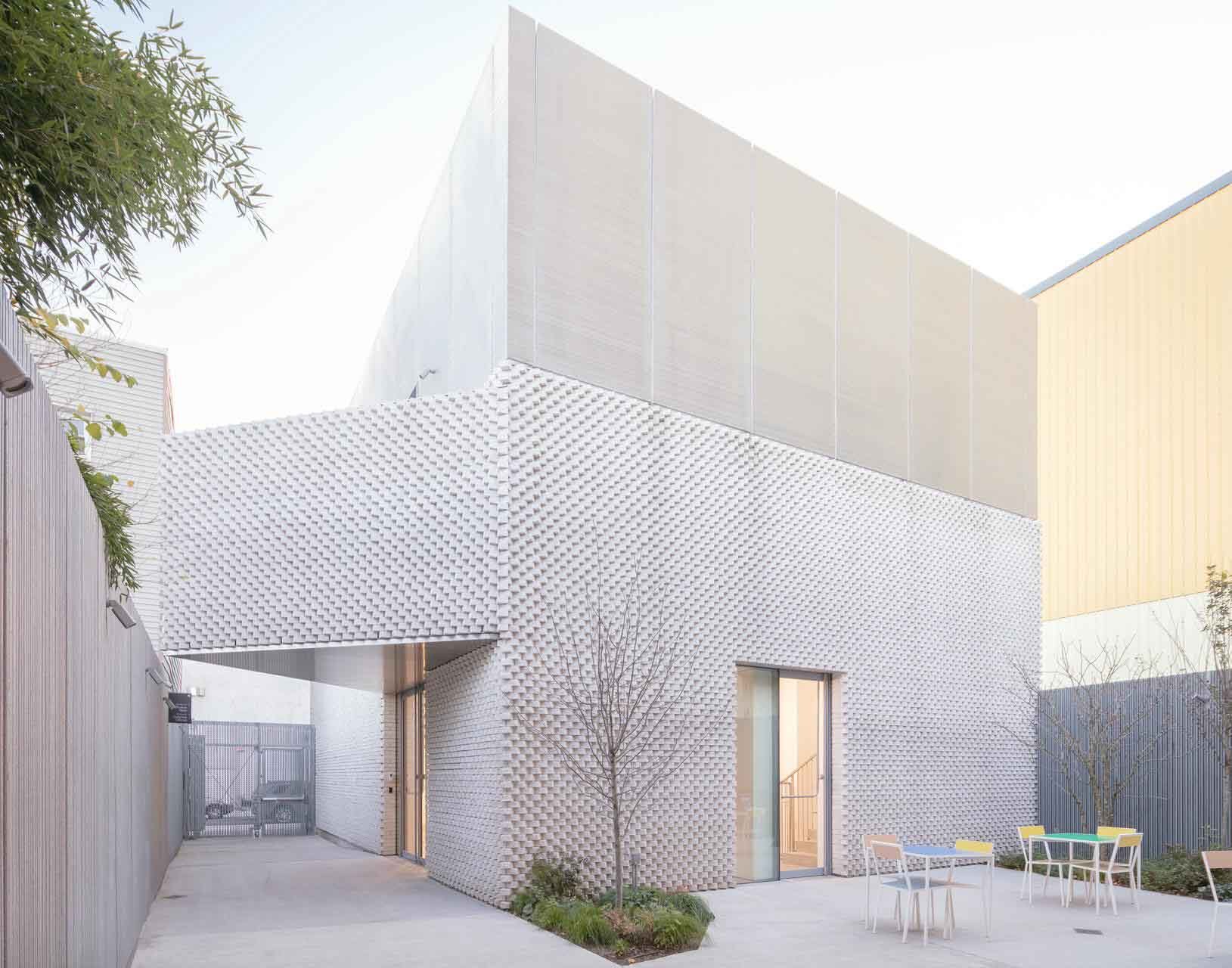‘Yes, this portrait, it tells a history. But it does not live the present. It speaks of our people past as though there is no cultural present, no expected future.’1 As architects, we hoard cultural information: maps, drawings, books, stories, pictures, notes, letters, sketches. We hope that through our analysis, this information can be meaningfully composed, and that together, our collected fragments can speak to a relevant culture or history in built form.
Over time, of course, we have moved away from physical contact in accumulating our hoards of information. This task seems much better left to the often-chaotic sprawl of the internet. To upkeep together, we share a decentralised, digital hoard, with a size beyond our comprehension – instant information, instant inspiration, instant culture.
It’s not unknown that the study of Aboriginal Australian and Torres Strait Islander cultures has a troubling history. Throughout the 19th and 20th centuries, much of what was known about many Aboriginal groups had been narrated by untrustworthy non-Indigenous anthropologists. These authors often wrote of Indigenous peoples as pieces of unclaimed history, rather than with Indigenous peoples as diverse, living cultures.
What then, when such information of troubling ethical origin reaches the uncontrolled digital realm for all – and specifically, for architects – to instantaneously access during the design process?
Daisy Bates, a self-taught anthropologist who conducted fieldwork in the early 20th century across Australian deserts, was once recognised as a pioneer in the study of Aboriginal Australian groups. Bates was often mentioned among great Australian women as an iconic national figure. Her studies remain an unparalleled (and frequently singular) ethnographic source on several Aboriginal Australian groups, specifically for those of the Western and Southern Australian deserts.
In recent decades, Bates’ popular and academic reputation has come under interrogation. Her accounts of Aboriginal groups revolved around the notion that they were primitive and passing; she led a negativist philosophy and believed that Aboriginal extinction was inevitable; her writings repeatedly made exaggerated and unfounded claims of cannibalism among Aboriginal groups. 2 Even during her time, many academics regarded her works as not “seriously anthropological”,3 and “as baseless as they are revolting”.4
To this day – and despite shifting perceptions of her legacy – Bates’ writing remains prevalent and easily accessible to those on the internet looking for information about specific Aboriginal groups. This prevalence is driven by algorithms that define the internet: the results that pop up when you search specific terms are organised by their relevance across the entirety of our digital sprawl. If you were to search Noongar culture, or Aṉangu symbolism, the results will likely be inundated with information derived from the fieldwork of Bates.
While we can place trust in results authored by Aboriginal Australian peoples and their respective cultural authorities, how we navigate to an authentic and lived truth in the chaotic digital environment is rarely considered. We scarcely interrogate cultural authenticity on the internet and place a blind trust in anonymous contributors: to many, simply having information is enough. If our hoard of analysis was to unknowingly carry some of the negativist ideas Bates portrayed in her fieldwork, then we are playing a part in introducing outdated philosophies into the built environment.
This issue is not specific to the case study of Bates. Charles P Mountford, an amateur anthropologist of the 20th century, published Nomads of the Australian Desert in 1976. Shortly after its publication, its sale was prohibited after legal action from Pitjantjara Council. The book contained culturally restricted information about the Pitjantjara peoples, who were unaware their culture would be shared widely to all – their rites have specific gender, age, and initiation-based conditions.5 To this day, copies are still available from rare book merchants, and scattered excerpts are not difficult to come across on the internet when researching Pitjantjara culture.
None of this is to discourage the involvement of Aboriginal cultures and peoples in the design process at all: instead, these case studies reveal a limitation in digital technologies in presenting authentic and lived Indigenous experiences. Aboriginal lore and truth-telling are concepts not built into the internet. Thankfully, our institutions are getting there – most Australian libraries and museums have frameworks to ensure Indigenous perspectives are heard in their digital catalogues6 – but by in large, it is up to us to proactively search out genuine relationships with Aboriginal peoples and cultures.
In 1961, Sibyl Maholy-Nagy wrote that “Cultural memory touches on something in man that is older and more durable than his immediate presence, something that moves him because in it he meets his immortal alter ego.”7 It is not until we learn from our Indigenous peoples and cultures that our architecture starts to move and breathe with our ancestors. Culture will never move at the pace of our digital sprawl: instead, as architects, we can only slowly and respectfully listen.
Notes
1. Linda Kennedy, “Face the Irony,” in Our Voices: Indigeneity and Architecture, eds. Kevin O’Brien, Rebecca Kiddle and Patrick Stewart (Oro Editions, 2018), 197.
2. Bob Reece, “‘You would have loved her for her lore’: the letters of Daisy Bates,” Australian Aboriginal Studies, no. 1 (2007): 51-70, https://search.informit.org/doi/10.3316/informit.715729098717482.
3. Ronald M. Berndt and Catherine H. Berndt, The World of the First Australians: Aboriginal Traditional Life – Past and Present (Aboriginal Studies Press: 1991): 536.
4. ed Strehlow, “Foreword,” in The People in Between: The Pitjantjatjara People of Ernabella, ed. Winifred Hilliard (Hodder & Stoughton: 1968).
5. Heather Moorcroft and Alex Bryne, “Intellectual Property and Indigenous Peoples’ Information,” in Australian Academic & Research Libraries 27, no. 2 (1996): 91, https://doi.org/10.1080/00048623.1996.10754962.
6. See Aboriginal and Torres Strait Islander Library, Information and Resource Network (ATSILIRN) Protocols (1995), adopted by Australian institutions: https://atsilirn.aiatsis.gov.au/protocols.php.
7. Sibyl Moholy-Nagy, “The Future of the Past,” in Perspecta 7, no. 1 (1961): 66, https://doi.org/10.2307/1566867
EJ Taylor
Drawing from their Yuin heritage, EJ believes the inception of architecture should first learn from First Nations practices and sustainability, viewing architecture as a delicate, precise craft of pieced together histories and cultures. They have been recognised on the shortlist for the 2024 RAIA NSW Undergraduate Medal and the 2025 AA Unbuilt Prize. EJ was recently been published in the academic journal BlakOut and currently works at Neeson Murcutt Neille as an architectural assistant




